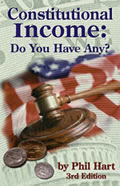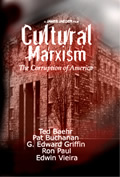A
CROSS OF GOLD
PART 1 of 5
By
Dr. Edwin Vieira, Jr., Ph.D., J.D.
May 10, 2011
NewsWithViews.com
[The full text of an address presented at the October 2010 Meeting of the Committee for Monetary Research & Education, in New York City.]
The present domestic and international monetary and banking systems have slipped into the initial stages of terminal dissolution. In their present forms, they cannot long survive.
This is not merely my own opinion, but the view of no less than the United Nations Economic and Social Council. In July of this year it published a report entitled United Nations World Economic Situation and Prospects 2010,[1] which stated that “[t]he risk of exchange-rate instability and a hard landing of the dollar could be reduced by having a global payments and reserve system which is less dependent on one single national currency”, and that “[a] new global reserve system could be created, one that no longer relies on the United States dollar as the single major reserve currency”.
This is globalist 1984-ish duckspeak for “our present funny-money scam is coming apart at the seams” and “we need to set up a new Ponzi pyramid before the old one collapses”. But if not in its prescription, yet in its description the United Nations states the truth.
So the question is not “Will the present domestic and international monetary and banking systems split apart at their seams?” but whether, in the course of their inevitable unraveling, they will drag this whole country—the real America, the America which was once worth the price of admission, the America which used to be a beacon of hope for the entire world—down with them.
Or, more precisely, the question is whether those among the American people who are alert to this danger will sit idly by and allow the worst to happen.
“They also serve who only stand and wait” cannot be the watchword in the coming battle. Remaining aloof will not be a viable option.
No hope is to be found in the notion that various clever ways exist for individuals to profit personally from the collapse of the reigning monetary and banking systems.
Speculators conjure profits to be reaped from increases in the so-called “price of gold”—going up, up, and up. This, however, is a lamentable econological fallacy, because it measures the value of gold in terms of another, and a terminally unstable, currency: Federal Reserve Notes.
Increases in the so-called “price of gold” largely reflect the decreasing purchasing power of Federal Reserve Notes as against gold—inexorably going down, down, and down (whether because of actual increases in the supply of Federal Reserve Notes or because of an erosion in public confidence in the value of whatever supply exists). If economic history is any guide, the day will surely come when Federal Reserve Notes—as have so many other paper currencies of their ilk—become worthless, except as numismatic curiosities. Then “the price of gold” in Federal Reserve Notes will be exceedingly, perhaps astronomically, high. But no one will care. Once upon a time, “the price of gold” measured in Weimar “marks”, or even in Confederate “dollars”, was significant. What, though, is “the price of gold” in Weimar or Confederate currency today? Does anyone know? Why would anyone bother to find out? And why should things turn out differently for Federal Reserve Notes?
Astute Americans need to envision, and then to bring about, a new monetary system in which no one talks about “the price of gold”, but only of “prices in gold”.[2] No “price of gold” exists when a fixed weight of gold is the actual unit of money. Under those circumstances, all prices are stated in terms of gold. When a fixed weight of gold is the unit of money, “the price of gold” is a meaningless concept, or at best a tautology: namely, “the price of a unit of gold” is precisely “a unit of gold”. In that context, asking what is “the price of gold” would be as sensible as asking today what is “the price of a nominal ‘one-dollar’ Federal Reserve Note”.
So, other than waiting for disaster to supervene, exactly what is to be done?
There are at least three basic plans for dealing with the present situation:
First, the plan of the international political and financial crime families to maintain their empire of “funny money”.
Second, various plans for “reforming” and “regulating” the Federal Reserve System and somehow “returning” to something some people call a “gold standard”, based on a “redeemable currency” that is somehow “backed” by gold. And,
Third, a plan for replacing the present unstable and unsustainable monetary and banking systems with an entirely new system of economically sound, honest, and constitutional money—by introducing into the free market and State governments an alternative currency consisting solely of gold, with no admixture of paper, and then letting competition between Federal Reserve Notes and specie settle the matter, once and for all.
The first two plans are similar, in that they are predicated upon imposing control “from the top down”: namely, common people must use whatever currency “the authorities”—domestic or international—decree.
Under the third plan, control derives “from the bottom up”: namely, the people may use whatever currency they desire, and those who elect to employ the alternative currency can simply walk away from the Federal Reserve System.
It may be imagined, however, that the second and third plans are at least similar, because they both rely on gold to some significant degree. Nothing could be further from the truth, however.
Here, careful analysis is in order—
[1] A new supra-national monetary régime.
The international political and financial crime families know full well that the Federal Reserve System—indeed, the whole complex, corrupt apparatus that couples private banks and public institutions through the Treasury of the United States—is inherently unstable and needs to be replaced, because it can no longer be propped up, let alone reformed in any fundamental sense. Aware that the Federal Reserve System’s days are numbered, they intend to translate the paper-currency scam to the next level, just as they have done, step by step, in crisis after crisis, throughout American history.
To understand the genesis of this plan, a review the past is necessary:
Prior to the Civil War, America suffered from two attempts by Congress to impose a so-called “national bank” (the first and second Banks of the United States), as well as from the States’ creation of numerous State and local banks, both private and quasi-public in character. This loose arrangement failed, because of the inherent instability of fractional-reserve banking and the insoluble economic and political conflicts it inexorably and inevitably generates. In particular, although all of the banks operated on the same principle of “fractional reserves”, no way was found to coördinate and control individual banks’ cycles of expansion and contraction of currency and credit for mutual benefit of the banks as a class. Instead, the banks’ unregulated competitive looting of society through monetary manipulations led periodically to serious economic breakdowns called “bank runs”, “suspensions of specie payments”, “stringencies”, “panics”, “depressions”, and so on. To overcome these problems, the locus of the bankers’ economic power needed to be translated to a higher level, and their economic power needed to be brigaded with, or at least protected by, political power.
Thus, during the Civil War, to prop up and organize the fractional-reserve system, a new set of banks—called “National Banks”—was created and tied to the United States Treasury and the national debt through the National Currency Acts in 1863 and 1864.[3] Yet, although these institutions were called “National Banks”, this was a scheme of merely regional and imperfect cartelization.
The weaknesses of this system became apparent only forty-three (43) years after the initiation of the scheme, when the great panic of 1907 proved that the National Banking System needed a major overhaul. The fundamental flaws pointed out at the time were that the system provided no single “lender of last resort” to pump up the pyramid of currency and credit in times of crisis, and set up no central regulator to discipline the bankers in order, if possible, to forefend crises altogether. To overcome these deficiencies, the locus of economic power needed to be translated to a still higher level.
So full national cartelization and central regulation of the banks was set up in the Federal Reserve System through the Federal Reserve Act of 1913.[4] Indeed, the Federal Reserve System went beyond mere national cartelization to national Ponzification. The Federal Reserve regional banks promised their depositors to redeem Federal Reserve Notes in gold or other “lawful money”on demand, which promise was “guaranteed” by the United States Treasury’s ability to extract payments from taxpayers.[5] So, just as in a classical Ponzi scheme present payments to the first tier of “investors” are “guaranteed” by revenues to be derived from subsequent tiers of duped “investors”, under the Federal Reserve System promises of present redemption of Federal Reserve Notes were “guaranteed” by anticipated tax revenues—except that, far better than the classical Ponzi scheme, these revenues could be coerced from unwilling “investors”.
Yet, once again, the inherent, inexorable instability of “fractional-reserve banking” proved too destructive for legislative draftsmen to contain. By 1932—a scant twenty (20) years after its inception—the Federal Reserve System (as the saying has it) “went off the gold standard” by suspending specie payments domestically in 1933 and 1934. And that suspension continues to this very day.
Nonetheless, because of the uniquely favorable situation of the United States in the aftermath of World War II, it was possible once again for the magicians of monetary manipulation to secure their own positions by translating the locus of economic power to a still higher level. Under the Bretton Woods Agreement [6] and the International Monetary Fund[7] in 1945, the Federal Reserve System effectively became the first “world central bank”, and the Federal Reserve Note effectively became “the world reserve currency”.
This went beyond national cartelizaton and Ponzification to international Ponzification, but still nationally centered. That is, the bankers’ scheme moved to a higher level than under the original Federal Reserve Act of 1913, but still only partially and imperfectly.
A central pillar of this structure collapsed only twenty-six (26) years later, though, when the Federal Reserve System and its surety, the United States Treasury, defaulted on “the international gold standard” in 1971, suspending specie payments on Federal Reserve Notes to everyone everywhere. And that suspension, too, continues unto this very day.
Now the disintegration of the entire edifice of central banking and fractional-reserve debt-currencies has begun—not just nationally, but globally as well—only thirty-nine (39) years after the final repudiation of redemption of Federal Reserve Notes in gold in 1971.
Observe that, before it lurched into chaos, the first “world central bank” and “world reserve currency” held together for only thirteen (13) years more than the original Federal Reserve System (from 1913 to 1933), and for four (4) years less than the original National Banking System (from 1864 to 1907).
Today, similar to the situations that existed prior to the National Currency Act and the original Federal Reserve Act—(i) A multiplicity of national or regional central banks, all operating on the faulty principle of “fractional reserves”, exists. And (ii) all of these banks are attempting to accommodate irresponsible governmental fiscal policies and robber-baron pillaging of private economies in their home territories.
The difference now is that an ersatz “world central bank” has been jury-rigged around the Federal Reserve System—but it is located in a single country, is tied to that country’s laws, and is trying to sustain the reckless fiscal policies and unbridled financial brigandage of perhaps the most fiscally profligate and even corrupt of all nations in the history of the world. (Again, this is not my opinion only. Professor Laurence Kotlikoff now estimates the General Government’s so-called “fiscal gap”—that is, the present value of the difference between projected governmental spending and projected government revenues in all future years—to exceed $200 trillion “dollars”.[8] And this is “the fiscal gap” of the General Government alone!
As with the National Currency Act, no adequate “lender of last resort” is available to bail out the Federal Reserve System as a whole , other than perhaps the United States Treasury, by printing irredeemable currency in the form of so-called “Lincoln Greenbacks”. And no supra-national regulator exists to moderate the Federal Reserve’s excesses. No national regulator exists, either, as Congress has proven impotent and incompetent in that capacity—or, perhaps more accurate a description, has functioned as a co-conspirator in the process of domestic and international looting.
| Subscribe to the NewsWithViews Daily News Alerts! |
Thus, the world is confronted by a shaky state of affairs similar to that which plagued the United States during the era of the National Currency Act and that led to the creation of the Federal Reserve System—except that the present situation is orders of magnitude more serious.
So, one can confidently predict on the basis of precedent that the international political and financial crime families will now attempt to create a true supra-national world “central bank of issue” empowered to emit a new supra-national fiat currency, supra-nationally “managed”, and to exercise regulatory authority over all national central banks—in all things free from control by any national or regional government. Which, of course, will render this new supra-national bank itself a species of world government, or at least the nucleus of one. For part two click below.
Click here for part -----> 1, 2, 3, 4, 5,
Footnotes:
1.
To be found here.
2.
Gold and silver are the constitutional monetary metals, and the actual
constitutional unit of money is silver (the “dollar” of
371.25 grains troy), with gold valued in units of silver at its free-market
exchange-rate with silver. But to simplify this discussion, this paper
will treat gold alone as the unitary proxy for the more complicated
duometallic system.
3.
Act of 25 February 1863, ch. 58, 12 Stat. 665, superseded by
Act of 3 June 1864, ch. 106, 13 Stat. 99.
4.
An Act To provide for the establishment of Federal reserve banks, to
furnish an elastic currency, to afford means of rediscounting commercial
paper, to establish a more effective supervision of banking in the United
States, and for other purposes, Act of 23 December 1913, ch. 6, 38 Stat.
251.
5.
See FR Act of 1913, § 16, ¶ 1, now as amended with deletion
of the promise to redeem in gold, 12 U.S.C. § 411. To be sure,
in the event of the Federal Reserve regional banks’ failure to
redeem their notes, the Treasury could then assert a first lien on the
banks’ assets. See FR Act of 1913, § 16, ¶ 4, now
as amended, 12 U.S.C. § 414. But what good would this statutory
recourse prove to be if those banks were bankrupt and therefore without
sufficient assets to meet their liabilities?
6.
Act of 31 July 1945, Pub. L. 171, 59 Stat. 512.
7.
T.I.A.S. 1501 (27 December 1945), 60 Stat. 1401, especially
Art. IV, § 1(a), 60 Stat. at 1403.
8.
See his article “United
States is bankrupt”


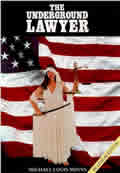

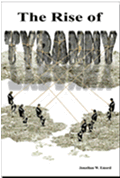
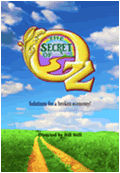
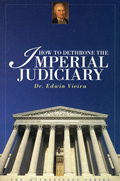
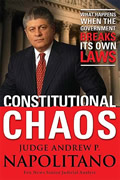





 Share
This Article
Share
This Article
